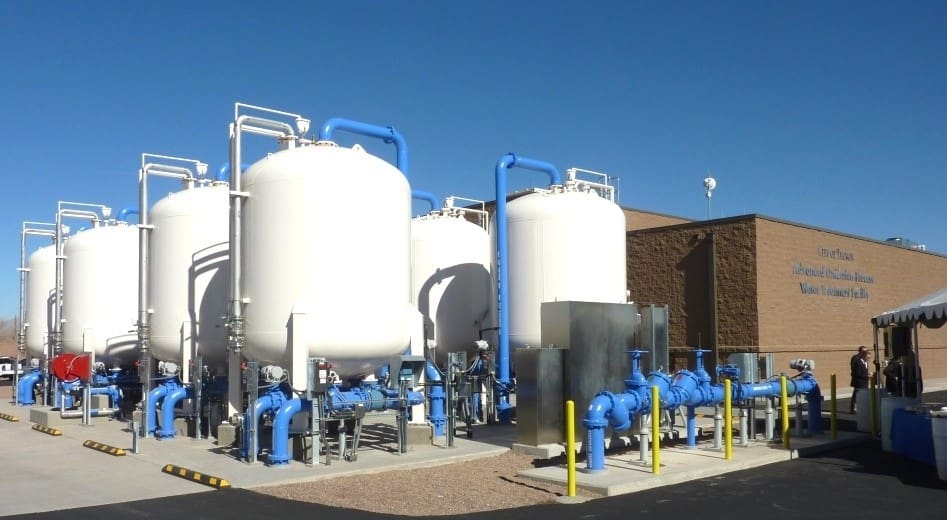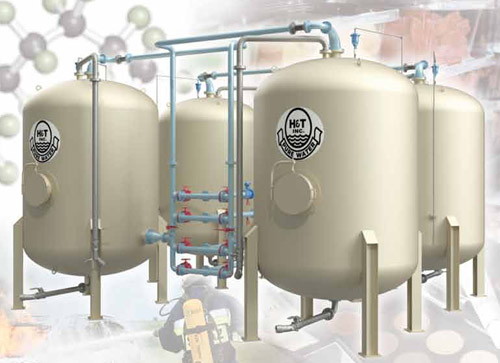PFAS Waste Management in Landfills to Minimize Environmental Harm
Just How PFAS Treatment Makes Certain Clean and Lasting Water
The existence of PFAS, frequently recognized as "for life chemicals," poses substantial obstacles to water high quality and public health. The ramifications of these treatments expand beyond instant health benefits; they elevate important questions about long-term water administration methods that have to be dealt with to make sure a durable future.

Comprehending PFAS Contamination
PFAS, or per- and polyfluoroalkyl compounds, have actually arised as a significant environmental issue because of their prevalent frequency and persistence in the setting. These artificial chemicals have actually been made use of in numerous commercial applications and consumer items, consisting of non-stick cookware, waterproof clothes, and food packaging, because of their special buildings such as water and oil resistance.
The contamination of dirt and water resources by PFAS takes place largely via industrial discharges, firefighting foam use, and seeping from land fills. pfas management. As soon as launched, these compounds are resistant to degradation, leading to their accumulation in the setting. This determination elevates important problems, as PFAS can travel long ranges via groundwater and surface area water systems, affecting drinking water supplies and ecosystems

Health And Wellness Risks of PFAS
The perseverance of PFAS in the setting elevates substantial health concerns for people exposed to these compounds. Research study has actually connected PFAS direct exposure to numerous adverse health effects, consisting of immune system dysfunction, liver damage, and boosted threat of certain cancers.
The ubiquity of PFAS in consumer products, such as non-stick cookware, water-repellent materials, and food packaging, further amplifies the threat of exposure. Consuming alcohol water infected with PFAS is a considerable worry, as these chemicals can leach into groundwater resources. At risk populaces, including children and those living near commercial websites, may face elevated threats as a result of their creating systems and possible for greater direct exposure levels.
As recognition of these health and wellness risks remains to expand, regulatory firms are starting to develop standards for PFAS levels in drinking water. Public health campaigns are vital to minimize direct exposure and safeguard neighborhoods from the lasting impacts of these hazardous materials.

Cutting-edge Treatment Technologies
How can we properly tackle the difficulties posed by PFAS contamination in water resources? Cutting-edge therapy technologies are becoming critical solutions in the mission for clean water. These approaches concentrate on the removal or damage of per- and polyfluoroalkyl materials (PFAS), which are well-known for their determination in the environment.
One promising method is adsorption utilizing click this link innovative products, such as triggered carbon and ion exchange resins. These products have actually revealed effectiveness in recording PFAS particles from water. One more significant modern technology is membrane purification, which makes use of nanofiltration and reverse osmosis to different impurities at the molecular degree, therefore giving a barrier against PFAS.
Additionally, progressed oxidation procedures (AOPs) employ strong oxidants to break down PFAS compounds into harmless byproducts. This method is particularly efficient for treating extremely infected water sources. Bioremediation methods, employing specific microbes, are additionally being explored to degrade PFAS.
As research study continues, hybrid systems that incorporate multiple innovations may provide improved efficiency, attending to the complexities of PFAS contamination. The advancement and application of these ingenious therapy modern technologies are important steps toward making certain the safety and security and sustainability of our water sources.
Benefits of Reliable PFAS Treatment
Effectively treating PFAS contamination in water sources substantially improves public health and wellness and ecological security. PFAS, commonly described as "for life chemicals," are immune to deterioration and can build up in the body, causing major health risks such as cancer cells, liver damages, and body immune system dysfunction. By applying effective therapy methods, areas can decrease exposure to these damaging materials, inevitably boosting the wellness outcomes of their populaces.
Furthermore, effective PFAS therapy adds to the conservation of local ecosystems. Contaminated water can adversely affect aquatic life and interfere with the fragile balance of local habitats. By ensuring tidy water, treatment processes shield biodiversity and preserve eco-friendly stability.
Additionally, efficient PFAS removal can promote public confidence in water top quality. When neighborhoods are ensured that their alcohol consumption water is without hazardous pollutants, it advertises a feeling of safety and wellness. This depend on is necessary check out this site for community involvement and support for continuous water administration campaigns.
Future of Water Sustainability
Amidst expanding worries concerning water high quality and scarcity, the future of water sustainability depends upon innovative methods and collaborative initiatives. As neighborhoods encounter the impending threats of pollutants like PFAS, the development of innovative therapy modern technologies is necessary. These innovations not only concentrate on the removal of dangerous compounds but likewise advertise the reuse and recycling of water, consequently minimizing general demand.
Furthermore, reliable water administration plays an important function in ensuring sustainable practices. Policymakers should incorporate clinical research with governing structures to develop clear guidelines for water use and therapy. Stakeholder interaction, consisting of regional communities and markets, fosters a feeling of common obligation and Get More Info motivates sustainable techniques throughout numerous industries.
Financial investment in facilities is additionally critical; upgrading aging systems to include modern purification and filtration methods can dramatically enhance water top quality. Moreover, accepting green innovations, such as natural filtering systems, can offer environmentally friendly solutions.
Eventually, the future of water sustainability lies in an alternative technique that incorporates technology, policy, and area participation. By focusing on these elements, we can protect our water resources for generations to come, making certain clean and sustainable water for all.
Verdict
In conclusion, the reliable treatment of PFAS is vital for making certain clean and sustainable water. By utilizing advanced innovations such as activated carbon adsorption, membrane layer filtering, and advanced oxidation processes, communities can significantly lower the health threats related to these impurities. The combination of these treatment techniques sustains ecological community security and improves biodiversity. Eventually, durable PFAS treatment approaches add to long-lasting strength in water management, cultivating public count on water top quality and advertising sustainable practices.